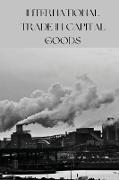International Trade In Capital Goods
BücherAngebote / Angebote:
International trade theory has been dominated for many decades by models that either
explicitly, or implicitly evade altogether the questions of the heterogeneity of capital
goods, and the issue of distribution as a consequence of international trade. The capital
controversies of the 1960's have had inevitable implications for neoclassical trade
theories that were based on the notion of capital as non-produced endowments whose
quantity is defined independently of the prices of good. Four kinds of developments have
taken place in the literature since then.
(1) Steedman1 and his co-authors wrote a series of papers to show that if the
distinction between capital as the value of heterogeneous capital goods and the
capital goods themselves is made, as it ought to be made, many of the standard
propositions and theorems of modern trade theory would either fail to hold or
would, at the very least, have to be heavily qualified.
(2) Dornbusch, Fischer & Samuelson2, Shiozawa3 and others, on the other hand,
developed the Ricardian model and extended it to several commodities including
trade in intermediate goods. Specifically, they showed that with international
trade in intermediate goods it is no longer possible to solve the price system of
any country in isolation from the price systems of its trading partners, the price
system becomes international in nature.
(3) Eaton and Kortum4 developed a model of multi-country multi-commodity trade
which allowed trade in intermediates but assumed quite restrictively that the
pattern of absolute and comparative advantages across countries and commodities
Folgt in ca. 15 Arbeitstagen
